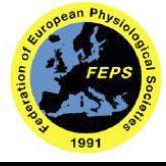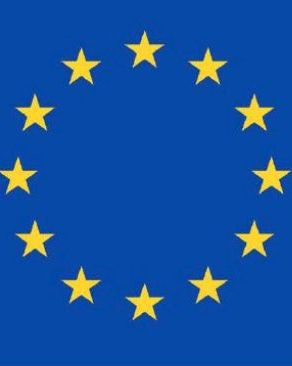
Physiology News Magazine
Physiology in Europe: The role of FEPS now and in the near future
The benefits of coming together are plain to see. So just what is the problem in having a pan-European meeting?
Features
Physiology in Europe: The role of FEPS now and in the near future
The benefits of coming together are plain to see. So just what is the problem in having a pan-European meeting?
Features
David Eisner
President, FEPS
Ulrich Pohl
Past-President, FEPS
Ger van der Vusse
Secretary General, FEPS
https://doi.org/10.36866/pn.91.31
The population of the European Union (about 500 million) is of the same order of magnitude as that of the USA (about 300 million). If anything, the USA is more spread out than is Europe; Miami to Seattle is 2732 miles, a distance which dwarfs the diameter of the EU whether measured from Cork to Athens (1,826 miles) or Lisbon to Helsinki (2090 miles).

However, the environment in which physiologists work is completely different in these two regions. The USA has one physiological society (the APS) with 11,000 members. In contrast Europe has about 30. The largest (The Physiological Society – PhySoc) has 3200 members. The other two large societies are the German (800) and the Scandinavian (950). In contrast, the smallest national societies comprise as few as 8 members. It has been evident for many years that European Physiologists often have much better contacts with colleagues in the USA rather than in other European countries. Indeed they seem to be much more likely to attend scientific meetings in the USA than in other, much nearer, European countries. One reason for this may be the much larger size of the USA meeting. The most recent Experimental Biology had 2,700 abstracts in the physiology area. In contrast, until a few years ago, the meetings of national societies in Europe were never more than 300-500. The Physiological Society’s annual meeting now has about 600 abstracts, but even this is much smaller than in the USA. Larger meetings are seen as better scientific value by the scientific community.
The European situation differs from that in the USA also in the heterogeneity of activity and funding. Some countries (UK, France, Germany and Scandinavia) have very long and virtually unbroken histories of physiology research. For others, the vicissitudes of history and politics mean that physiology is mainly seen as a subject for medical education with very little research activity. It was against this background that, in 1991, the Federation of European Physiological Societies (FEPS) was founded. As its name suggests, FEPS is a federation of national physiological societies in Europe. It has grown from strength to strength and currently has 29 national societies as members with the newest (Malta) having joined earlier this year. In this sense FEPS is an “umbrella” organization. When summed, the total number of European Physiologists who are members of FEPS via their respective national societies is of the order of 8000 which is comparable with the total number of individual members of the APS. The official scientific journal of FEPS is Acta Physiologica (the erstwhile Acta Physiologica Scandinavica).
As originally constituted, FEPS organized stand-alone meetings but it soon became clear that this was simply adding to the number of meetings in an already crowded timetable. For the last 10 years, therefore, FEPS has met in conjunction with other societies. When the FEPS meeting is held with one of the individual European national societies the host society typically benefits from a much larger meeting and a higher profile for physiology in its country. FEPS supports these scientific meetings by financially supporting the FEPS key note lecture, the FEPS physiology teaching symposium, a number of scientific symposia including the European Young Physiology Symposium (EYPS), and awarding travel grants for young European physiologists. To improve the communication between the European Physiological Societies FEPS issues FEPS-newsletters and has launched a website (www.FEPS.org) for dissemination of ideas and information.

Twenty years on from the establishment of FEPS, the landscape of European physiological societies and their meetings has scarcely changed. While there are some joint meetings between national societies, the vast majority are those of a single society. Does this matter? We think it does; all other things being equal, a meeting of 2,000 will be much more likely to have symposia and posters to interest all comers than will one of a few hundred. Our students and junior colleagues would benefit from the opportunity to meet others from the rest of Europe. There is also the hope that a big meeting will attract scientists from the rest of the world in comparable numbers to the USA whose meetings have become de facto ‘International’. We
have no desire to stop our colleagues attending these excellent meetings but, rather, wish that Europe could also provide such meetings to the benefit of all. A pan-European meeting would have a number of important advantages:
- It would be easier and less expensive for European physiologists to attend while, at the same, time being attractive to overseas colleagues.
- It would provide an ideal environment for colleagues from across Europe to meet one another and plan collaborations. This is particularly important given the increasing role of EU funding.
- It would open up a larger job market for younger scientists.
- It would make Physiology more visible in Europe and help sustain the subject as an independent discipline in European life sciences.
Our ambition is to have a single pan-European Physiology meeting. National societies could give up their own annual meeting and meet in one location. We do not see this as being a geographical problem. Members of the Scandinavian Physiological Society are used to flying between Denmark, Finland, Iceland, Norway and Sweden. In a country the size of Germany or the UK/Ireland people are well used to flying to national meetings. What could be simpler than taking a single flight or fast train to a well-connected hub somewhere in Europe? Attempts have been made to produce such a meeting. In 2006 negotiations for a Scandinavian, German and PhySoc meeting almost succeeded, but the best that could be realized was a joint Scandinavian and German meeting in association with FEPS. This year’s IUPS meeting in the UK was another potential venue to include such a meeting. The Scandinavian Physiological Society and FEPS have made this the venue for their annual meetings, but this was not possible for the German Society.
What are the problems in having a pan-European meeting? There are certainly practical questions. The UK Society meets in July while the Germans favour March. These dates fit with the academic calendars in these countries. But are these issues really so important? Is Europe to be forever condemned to not being able to host a major meeting which can compare with those in the USA?
What is the way forward? We suggest the establishment of a pan-European meeting, initially every other year. As well as the usual considerations of cost, etc., the venue should be chosen for ease of travel from the rest of Europe and further afield.
Many of the leaders of the European physiological societies will be attending IUPS. This seems an ideal opportunity to start discussions.
The Physiological Society’s perspective
The Physiological Society is interested in exploring options for a larger Europe-wide meeting. However, we firmly believe this needs to be along the lines of the Experimental Biology meeting in the USA, which engages a number of life science societies who each organise their scientific programme, but under the umbrella of a professional organiser. The caveat is that the UK and Europe have fundamentally different financial models compared with those used in the USA and care needs to be taken that any future European meeting remains cost efficient for all participating partners. The FASEB model is one which we believe would ultimately be more appealing to both participants across disciplines and funding bodies
